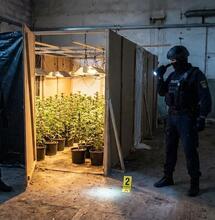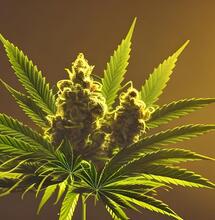Is Inflation Harming the Cannabis Sector?

The weed industry turned out to be pandemic-proof. For most operators, profits went up. Demand rose. The number of consumers also grew. Now the sector is on test again. Can it resist a record high inflation unseen in decades? The issue is complex. Prices for pot products remain relatively stable for the moment. But experts warn that there are more serious processes already taking place under the surface.
The annual inflation rate for the U.S. is just above 9% for the 12 months ended June 2022. Inflation was almost four times higher in the U.S. first quarter of 2022 than in the first quarter of 2021. So it's big news.
Most industries face prices going up. Supply chains are still trying to recover post-pandemic. Many things are uncertain as a global energy crisis is looming ahead. However, when it comes to the cannabis sector, prices of legal pot products appear unaffected. This far, fluctuations in retail prices in the U.S. remain relatively stable, and by some accounts, prices may even be falling. But it's not all sunshine and rainbows out there.
There is currently an excess of weed cultivation, so customer competition among retailers is very high. Dispensaries have done their best to keep the same product prices to generate more sales. It's similar among growers. They compete with other cultivators and thus cannot afford to raise the price they offer to retailers because of the product abundance. Basically, growers and retailers are in a gridlock with the current pricing, unwilling to raise prices out of fear. Despite expenses going up.
Data from cannabis analytics firm Headset shows that prices of marijuana flower, edibles and vape products actually went down by between 12 and 17 percent from January 2021 to January 2022.
The ongoing war in Ukraine is having an acute impact on the current inflation circling the globe. It has an enormous effect on global oil and gas prices. Add to that the global supply chain disruption caused by the pandemic. Shipping levels remain reduced all over the globe. Goods arriving from overseas face a long wait at ports. This influences the pricing for all different kinds of materials and resources, including those for cultivation and selling cannabis.
The cost of various agricultural supplies, including fertilizers, has risen by a quarter over the last couple of months. Even essentials hold a higher price, such as 20-gallon pots that went up from about $6 to $9, and coco coir which has more than doubled in price as it is produced overseas. Perhaps these are small incremental increases but will soon add up to a high extra cost for cultivators.
Economic experts warn that the weed industry may only appear to be somewhat resilient to inflation. Some aspects of inflation cannot be avoided, such as transport costs or salaries increase on par with the rising costs of living. In the U.S., factors also vary from state to state. Energy prices will fluctuate depending on whether a specific region relies on imported oil and gas or not.
Economic experts also believe that the higher prices of resources are not a top priority among cannabis company CEOs. Legislation remains a major influencing factor on the costs of cannabis, particularly the maturity of a state's cannabis legislation. States with a more recent legal framework will stick to higher wholesale prices, and vice versa, those that are more established can have lower wholesale prices.
Last but not least, there are also the customers. For folks, inflation means less spending and more saving. Consumers may restrain from buying weed. Growers would be the first to feel the pressure. Eventually, they may have to increase prices or face the reality of going out of business. If growers cannot raise their prices collectively, some cultivators may have to leave the market because those who can sell at lower wholesale prices could force them out.
Inflation has apparently introduced complexities, and it's doing so in a sector that is still figuring out itself and which has been known for volatility and unpredictability. Competition remains high across the cannabis sector. Inflation too may persist for many months or even years to come. Along the way, we just may witness some defining moments for the future of the industry.


_11zon.jpg)








